Keynote Speakers
(in alphabetical order)

Prof. Dr. Reinhard Blutner
University of Amsterdam, Institute of Logic, Language and Computation, Amsterdam, Netherlands
Reinhard Blutner completed his Ph.D. in Theoretical High Energy Physics at the Karl Marx University of Leipzig (1975). Furthermore, he has a habilitation thesis in Cognitive Science at the Humboldt University of Berlin (Faculty of Philosophy, 1995). Blutner started his scientific carreer at the East German Academy of Sciences. Later, he taught linguistics at the Humboldt University of Berlin and artificial intelligence at the University of Amsterdam. In Amsterdam, he also gave courses on the philosophy of mind, intensional logic, and quantum cognition. Further, he gave courses at the University of Krakow, Stanford University, the University of Bloomington, the University of Oslo, and the Universities of Stockholm, Zadar, and Ljubljana. Blutner has written several books and about a hundred publications. His research interests concern the semantics and pragmatics of natural language, bidirectional optimality theory, lexical pragmatics, symbolic-connectionist integration, quantum cognition, and reasoning with uncertainty. Since his retirement in summer 2013 his work has concentrated on quantum cognition, including applications in cognitive musicology.
“Linking Thinking and Feeling: A Quantum Cognitive Approach“
Abstract
In classical, Cartesian theories of body and mind, the domains of thinking and feeling are strictly separated. For instance, early models of thinking and deciding are based on general ideas of rationality as developed in logic and decision theory. The classical idea is to assume that rational agents are expected utility maximizers. Of course, emotions and feelings do not play any role in these Cartesian models. In contrast, early models of feelings are derived from ancient theories of rhetoric, based on a system of fixed rules. For instance, in music, this system associates certain musical forms with distinct affects and feelings (doctrine of affections). Essentially, processes of thinking are excluded in this approach.
In the first part of my talk, I will outline some puzzles that illustrate the failure of theories that assume a strict separation of thinking and feeling. In the domain of rational decision processes, it concerns the infamous phenomena of bounded rationality (Tversky, Kahneman). In the domain of music, it concerns the emergence of musical meaning when the role of thinking and anticipation is ignored. I will demonstrate that for the generation of aesthetic feelings the linking of thinking and feeling is essential. In the second part, I outline the role of quantum cognition for the integration of thinking and feeling into a unified, coherent system.
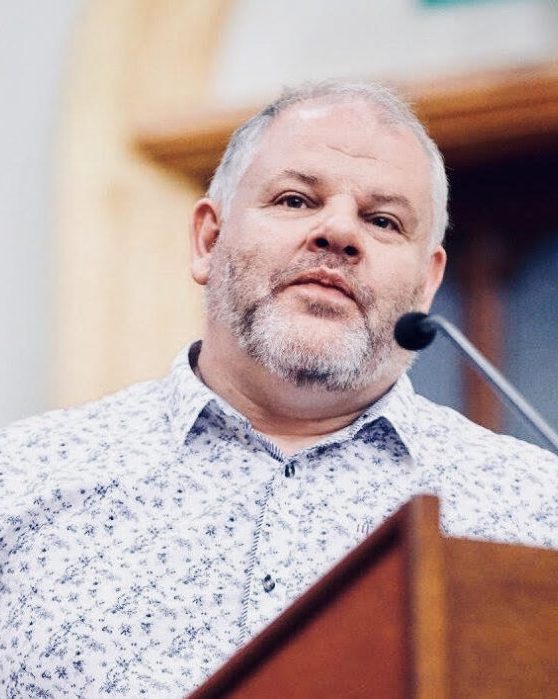
Prof. Dr. Andrew Davies
University of Birmingham, Professor of Public Religion. Director, Edward Cadbury Centre for the Public Understanding of Religion, School of Philosophy, Theology & Religion, UK.
Although my interests are varied, I am fundamentally a biblical scholar who works on the reception history of the Bible, particularly its influence on society, its handling by Pentecostals and Evangelicals throughout the world today and its interpretation in music and the arts. My PhD, in the field of biblical ethics, provoked my interest in literary-critical approaches to the Hebrew Bible (particularly in the use of a resistant reader-response methodology for reading biblical texts), and in the role of the Bible as a resource for moral thinking. These concerns have encouraged my broader fascination with the role and function of the Bible and religion in general in today’s world, their relevance for people of all faiths and none, and their cultural, social, and political significance. I’m really interested at the moment in why people think religion and sacred texts are so important to them in making lifestyle choices and how faith commitments impact our interactions with and contributions to society and the public and political spheres.
I joined the University of Birmingham in January 2010, after ten years of working in the theological college sector, the last five of them as Vice Principal. I now serve as Director of the Edward Cadbury Centre and am presently Head of Education for the School of Philosophy, Theology & Religion.
“What does it mean to lead consciously?”
Abstract
The concept of conscious leadership is increasingly being acknowledged across a variety of disciplines as an important strategy for reflective leadership intervention and thoughtful, intentional decision making. Conscious leadership is value-driven, person sensitive, holistic in its worldview and looks beyond current challenges to adopt a long-term perspective. But how does this differ from other models of leadership? What does conscious leadership really look like on the ground in practical terms? This presentation explores, from the perspective of an integrated approach to religion and spirituality, how consciousness in leadership can practically impact interventions on the ground, drawing on ideas of authenticity, ritualisation and ‘aura’ to examine the distinctive contribution which conscious leaders can bring to the table and ultimately seeking to identify the real practical difference that conscious leadership makes within the culture and the everyday practice of an organisation.

Prof. Dr. Andrea Diem-Lane
Mt. San Antonio College, Department of Sociology, Professor of Philosophy and currently the Chair of the Dept. USA.
Andrea Diem Lane received her Ph.D and M.A. from UCSB and her B.A. in Psychology from UCSD. Dr. Diem is the author of over 10 books, including The Cerebral Mirage, How to Study the Sacred, The Jain Path, The Gnostic Mystery, Spooky Physics, etc. Some of this material was presented at international conferences held in Agra, India, where she was a plenary speaker. Her latest publication is an annotated bibliography for Oxford University Press. On a more personal note, she is married to Professor David Lane with whom she has 2 boys, Shaun and Kelly. Besides being a strict vegetarian for nearly 40 years, Dr. Diem has been an avid surfer for over 35 years and regularly surfs in Huntington Beach and Newport Beach. In the last several years she has also taken up yoga and loves it!
Title
“The Future of A.I. in Meditative Practices“ DEEP LEARNING, AVATARIC INSTRUCTION, AND THE VIRTUAL ASHRAM
Abstract
When a meditation teacher has few students, he or she can provide, one on one instruction. However, with the advent of hundreds or thousands of pupils it is impractical, if not impossible, to provide the same level of attention. In movements such as the Radhasoami tradition, where there are hundreds of thousands and sometimes millions of adherents, the designated master can only spend very limited time with the vast majority of his or her disciples. On the surface, this seems to be an intractable problem with any large organization, but it is particularly worrisome in spiritual practices which necessitate a more intimately connected relationship.
However, with the advent of artificial intelligence, deep learning, and virtual reality avatars, consistent personal tutelage, directly correlated to an individual’s own needs and difficulties, becomes both possible and feasible. Although at first this may seem disconcerting or undesirable, the fact is that communicative technologies have already been widely adopted over the past century by religious leaders—these range from book distribution (utilizing postal services) to voice modifiers (loud speakers and microphones) to visual magnifiers (video projectors and webinars). The next logical step in this direction is 3D immersion via virtual, augmented, and mixed reality, which offers full bodied representations. What makes this latest conveyance fundamentally different, though, is that it can be coupled with synthetic neural networks, machine learning and life-like simulations
In this presentation we want to explore how meditative practices and spiritual communities will be transformed by these futuristic innovations—so much so, in fact, that we will be witnessing a digital revolution the likes of which were previously unimaginable. Our central thesis is that the evolution of communicative systems brings with them new and innovative ways to educate and learn. Because of this, the very way Radhasoami teachings are transmitted in the next few decades will be greatly expanded and enhanced.
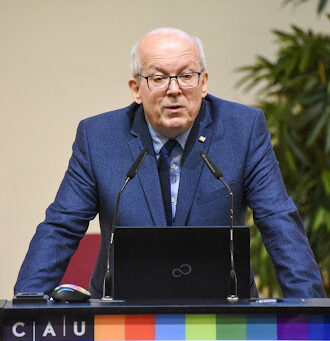
Prof. Dr. Wolfgang J. Duschl
Kiel University, Institute for Theoretical Physics and Astrophysics, Department of Astrophysics, Germany.
Wolfgang Duschl is a full Professor for Astrophysics at the Christiana Albertina University (CAU) at Kiel, Germany (since 2006). He is also the Chairman of the Academic Senate of CAU, and the Chairman-elect of the Board of Directors of the international professional journal “Astronomy & Astrophysics”.
He received his Doctoral degree from the Ludwig-Maximilians-Universität in Munich (Germany) with a thesis prepared at the Max Planck Institute for Astrophysics (Garching, Germany). Other stations in his career were the Universities of Cambridge (UK), Heidelberg (Germany), and Arizona (Tucson, AZ, USA), and the Max Planck Institute for Radio Astronomy in Bonn (Germany).
His main research interests are the evolution of super-massive black holes and the atmospheres of exoplanets.
“The relativistic and the non-relativistic perception of space and time in astrophysics”
Abstract
Most celestial bodies are separated by distances that take even photons a considerable amount of time to traverse, unlike most experiences in everyday life. This leads to an immediate coupling of space and time even in non-relativistic environments, in addition to the three-plus-one-dimensional relativistic spacetime. In my talk, I will discuss this phenomenon and show that most astrophysical investigations would be much more complicated if the speed of light were infinite. In addition, I will discuss the extent to which the value of the speed of light relative to other natural constants influences (and dominates?) our experience and awareness of the universe and its major constituents.
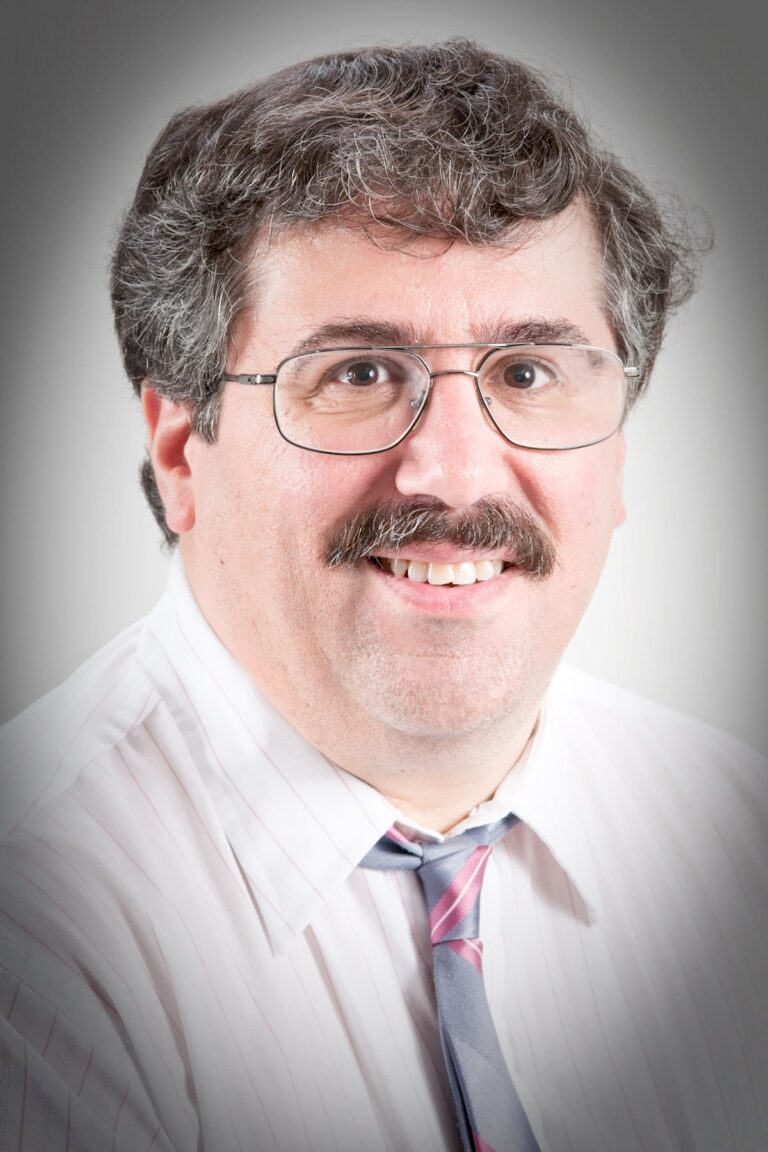
Prof. Dr. Rocco J. Gennaro
Professor of Philosophy at the University of Southern Indiana, USA.
Rocco Gennaro received his Ph.D. in 1991 at Syracuse University. Dr. Gennaro’s primary research and teaching interests are in Philosophy of Mind/Cognitive Science (especially consciousness), Metaphysics, Early Modern History of Philosophy, and NeuroEthics. He has published eleven books (as either sole author or editor) and over sixty articles and book chapters in these areas. Two of his most recent books are Consciousness (Routledge, 2017) and Mind and Brain: A Dialogue on the Mind-Body Problem, 2nd edition (Hackett, 2020).
“Personal Identity and an Afterlife: Eastern vs. Western Perspectives” – via video mode.
Abstract
The problem of personal identity and the nature of the self is one that appears both in Western and Eastern Philosophy. In particular, I’ll contrast the dominant Lockean view that personal Identity is tied to consciousness and episodic memory with the dominant Buddhist “no-self” view of persons. I will critically discuss both approaches with special attention to how they impact the typical and differing Western and Eastern conceptions of an afterlife.
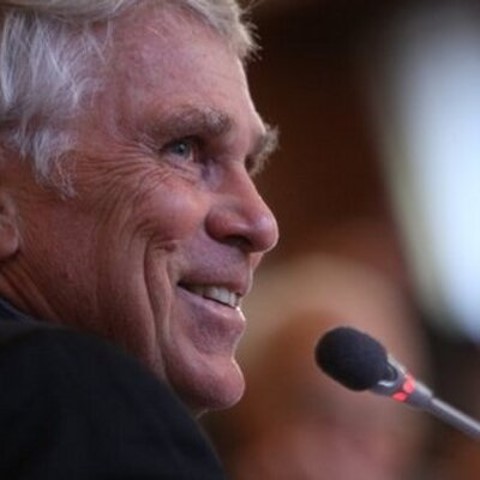
Prof. Dr. Mark Juergensmeyer
University of California, Santa Barbara, Department of Global Studies, USA.
Mark Juergensmeyer is Distinguished Professor of Sociology and Global Studies at the University of California, Santa Barbara, where he was founding director of the Orfalea Center for Global and International Studies. He has taught at the Berkeley, Santa Cruz and Santa Barbara campuses of the University of California and served as founding dean of Asian and Pacific Studies at the University of Hawaii. He is the recipient of Guggenheim, American Council of Learned Societies, and other fellowships, and has two honorary doctorates. He has served as President of the American Academy of Religion, and is author or editor of 30 books, including The Oxford Handbook of Global Religion, The Encyclopedia of Global Religion, God in the Tumult of the Global Square, Radhasoami Reality, Gandhi’s Way, and the award-winning Terror in the Mind of God. He received his PhD in political science from the University of California at Berkeley and a Master of Divinity from Union Theological Seminary, New York.
TBA.
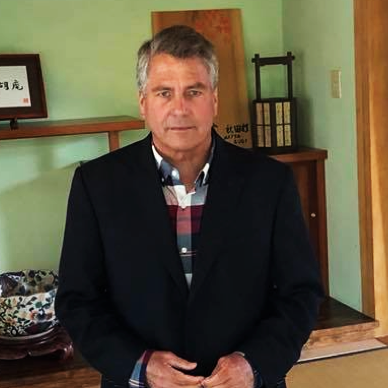
Prof. Dr. David Christopher Lane
Mt. San Antonio College, Professor of Philosophy, Department of Philosophy, USA.
David Lane is the author of many books, including The Radhasoami Tradition, Exposing Cults, The Unknowing Sage, and The Virtual Reality of Consciousness. His latest book The Sound Current Tradition: A Historical Overview is being published by Cambridge University Press and is finally comming out this summer. He is the founder of the MSAC Philosophy Group, which is responsible for publishing 175 books, 150 audiobooks, and over 100 mini films. Professor Lane has been the featured keynote speaker to several International Conferences in India. Professor Lane has a deep appreciation of Virtual Reality technology and has published widely on how to incorporate VR into the classroom. On a more personal note, Dr. Lane is an avid surfer and bodysurfer, having won the World Bodysurfing Contest in 1999 and the International Bodysurfing Contest 8 times (1997-2016). Dr. Lane has previously taught at the UCSD and CSULB, where he taught courses in English, Science, and Philosophy. Professor Lane’s most recent work was published by Oxford University Press.
“Digital Maya The hierarchical simulacra, conscious awakenings, and shabd yoga“
Abstract
The ancient Indian concept of Maya provides a deep insight into the nature of reality. Because what we perceive often betrays its real origination, we tend to confuse cause and effect, image and object. This is precisely how and why a magician can so easily cast her spell over us. Using only sleight of hand, the conjurer misdirects our attention so that we don’t see the simple physics behind the deception. Instead, we get mesmerized by the performance, falsely believing that something superluminal has transpired. Nature, likewise, is the great conniver. We only access the tiniest sliver of what is possible, blinded from the hierarchical simulacra of awareness that is our heritage. It is for this reason that mystics from both East and West speak of “consciously waking up” from the illusion of our current state, where we are trapped into believing that nothing higher than the waking state exists. We are prisoners in a fragmentary illusion and haven’t realized that a vast horizon of possibilities awaits our arrival.
Although the idea that the world is ultimately a beguiling phantasm has a long history, modern science, via ever sophisticated computational technologies, has ushered in a radically new way of understanding the cosmos at large. Our conception of matter has evolved from uncuttable bits of material––Democritus’ original atoms––to subtler mathematical fields of information: “It from Bits.” As John Wheeler, the distinguished physicist opined, “all things physical are information-theoretic in origin and this is a participatory universe.” But how do we transcend our present boundary, our “digital” Maya? The sages from the Sant and Radhasoami traditions argue that the secret technique is a simple one: trace your consciousness to its terminal source. That is, focus one’s attention within by witnessing how self-awareness arises. The technique is natural and is part and parcel of human neuroanatomy. By listening to increasingly finer gradations of the sound current during meditation, the scattering mind becomes one-pointed and conscious of a higher genesis beyond thought and language. The neophyte glimpses a new terrene that makes the waking state seem dull in comparison. The glitch in the system, however, is that each awakening tends to prematurely convince the practitioner that what they have achieved is the ultimate. Just as when we dream and think that we are awake only to realize anew that we are caught in yet another dream, albeit more lucid than the one prior.
In this presentation we will want to explore John Wheeler’s seminal idea of an information centric universe via Darwinian evolution and how, in turn, such a process invariably constructs bewitching worlds that betray their underlying originations. In addition, we want to scientifically understand how shabd yoga provides a deeper insight into the scaffolding nature of consciousness by a cascading series of continual awakenings.

Dr. Christine Mann
Author, Theologue, Psychologist, Germany.
Christine Mann, née Heisenberg, is the 6th child of 1932 Nobel Laureate Werner Heisenberg and his wife Elisabeth Heisenberg. She studied Theology and Pedagogics in Munich (1964-1968), Germany, and Psychology at the University of Münster (1974-78), and in 1986 obtained her PhD in the field of Educational Science at the University of Göttingen. She has worked at various primary schools in Bavaria and North Rhine-Westphalia, and as head of a school psychological counselling centre in Worms. In 1966, Dr Mann married Prof Frido Mann, grandson of 1929 Nobel Laureate Thomas Mann.
Since 2001 Dr Mann has turned to quantum physics. In 2011 Frido and Christine Mann initiated an interdisciplinary discussion group, in which they met regularily with Prof Dr Thomas Görnitz and others, to think about questions of the relationship between mind and matter in quantum physics.
After numerous publications in the pedagogical-didactic field, in 2017 Frido and Christine Mann jointly published the monograph Es werde Licht. Die Einheit von Geist und Materie in der Quantenphysik (Let there be Light. The Unity of Spirit and Matter in Quantum Physics), Fischer-Verlag. The anthology Im Lichte der Quanten. Konsequenzen eines neuen Weltbildes (In the Light of Quanta. Implications of a New World View), edited by Frido and Christine Mann, is scheduled to be published by the Wissenschaftliche Buchgesellschaft (WBG) Theiss in February 2021.
“Quantum physics and the development of consciousness“
Abstract
Since quantum physics showed us, that atoms are formed from elementary particles, which are neatly packed concentrations of energy in a certain structure, hundreds of physicists try to find all necessary particles to understand entirely, how matter is formed – without full success.
The invention of computer technology in the middle of the last century showed us, that even complex information can be split up in a sequence of binary alternatives, which makes it possible to calculate and answer questions with the computer. Therefor in the middle of the twentieth century many academics tried to understand our thinking by splitting it into sequences of binary alternatives. As well the quantum physicist and philosopher Carl Friedrich von Weizsäcker thought, that instead of looking for the smallest elementary particles we maybe should look for the simplest structure in the construction of atoms to understand, how the world is built. And he realized, that the simplest information bit, which is the binary alternative yes or no, one or zero, existing or not existing, could be the fundamental essence of our world, that can be formed to energy, to matter and to thinking as well. His coworker Thomas Görnitz realized, that information is something very subjective and therefor cannot be used in physics. But the binary alternative itself, which has the possibility to become information, to condense to physically measurable energy and to form matter, could be the fundamental essence of our world. He started with this idea and used it very successfully for calculating through many physical problems and, together with his wife, a physician and psychotherapist, to describe, how our consciousness could develop.
If, as this theory suggests, energy and matter is based on the same binary alternatives as our thinking, it is easier to understand, how in evolution the world became more and more complex. We can measure energy and we can analyse matter but with our physical methods we cannot measure the information aspect of matter and energy. But nevertheless this aspect of matter and energy enabled the first single-celled organisms, to combine information from inside and outside their cell membrane and to use its minimal, not physically measurable energy to trigger activities, which helped them to survive. That is the beginning of intelligence for surviving, which during evolution became more and more complex up to our consciousness.

Prof. Dr. Andreas Müller
Kiel University, Faculty of Theology, Professorship for the History of Church and Religion of the 1st Millennium, Germany.
Andreas Müller (*1966 in Bochum) studied Protestant Theology in Bethel/Bielefeld, Bern (CH), Heidelberg and Thessaloniki (GR). Doctorate in 1998 in Heidelberg. Habilitation 2003 in Munich with a thesis on spiritual obedience in Johannes Sinaites, called John of the Ladder. 2003-2009 work as pastor of the Protestant Church of Westphalia with a church-historical research project and parallel professorships in Jena, Kiel and Berlin. Since 2009 professor for church and religious history of the 1st millennium at Kiel University. Since 2011 Vice-Chairman and Chairman of the Church History Section of the Scientific Society for Theology (Wissenschaftliche Gesellschaft für Theologie). Since 2012 Chairman of the Society of Friends of Christian Mysticism.
“Religious Consciousness in Augustine – Individual Religiosity in Late Antiquity”
Abstract: tba
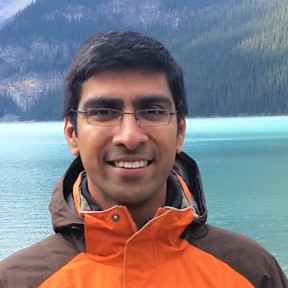
Prof. Dr. Apurva Narayan
The University of British Columbia, Computer Science and School of Engineering (Cross-Appointed), Assistant Professor, Canada.
Apurva Narayan obtained his Ph.D. from the Department of Systems Design Engineering, University of Waterloo and his Bachelor’s degree in Electrical Engineering from Dayalbagh Educational Institute in 2015 and 2008 respectively. His PhD thesis was an archetype of a holistic systems approach for modeling and designing engineering systems under uncertainty. Dr. Narayan was a NSERC post-doctoral fellow with the Real-Time Embedded Systems Group in the Department of Electrical and Computer Engineering at the University of Waterloo.
Dr. Narayan’s research investigates artificial intelligence/machine learning with emphasis on explainable AI/ML and quantum machine learning, data mining, data analytics, safety and security of cyber physical systems, software engineering, graph theoretic analysis of complex systems, and decision-making under uncertainty. He has authored and co-authored more than 20 peer-reviewed publications in top-tier ACM/IEEE conferences and journals.
Dr. Narayan’s current research focuses on data mining, data analytics, and machine learning in context of safety, security and understanding complex Cyber Physical Systems. He is currently interested in developing models for reverse engineering complex software systems. He is also interested in developing interpretable/explainable machine learning models. These models could be used for anomaly detection, specification mining, cyber-physical system security, and other applications.
Title
“The Modelling Supremacy of Topological Graph-Theoretic Models and Connections to Biology”
Abstract: tba
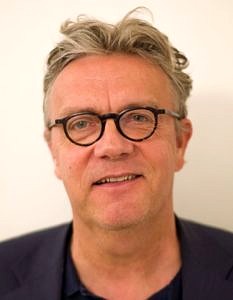
Prof. Dr. Andreas Nehring
Friedrich-Alexander-University, Institute for Systematic Theology, Germany
Andreas Nehring (*1957), Dr. theol. is Professor for Religious Studies and Intercultural Theology at the Friedrich-Alexander-University Erlangen. He has been visiting Professor at The University of Salzburg, in Tanzania, Hong Kong, Malaysia and Myanmar.
His fields of research are: Theories of Religious and Cultural Studies, Postcolonial Theologies, Transcultural Processes of Exchange and Communication between Europe and India, History of Missions, Mindfulness and the Reception of Buddhist Concepts in the West.
Selected Publications: Orientalismus und Mission – Die Repräsentation südindischer Religion durch deutsche Missionare. Wiesbaden: Harrassowitz (2003); Religious Turns – Turning Religions. Veränderte kulturelle Diskurse – neue religiöse Wissensformen, ed. with Joachim Valentin. Stuttgart: Kohlhammer (2008); Interreligious Comparison in Religious Studies and Theology. Comparison Revisited, ed. with Perry Schmidt-Leukel. London-Oxford-New York: Bloomsbury (2016); Postkoloniale Theologie II, ed. with Simon Wiesgickl. Stuttgart: Kohlhammer (2018); Heilige und geheiligte Dinge, ed. with Andrea Beck & Klaus Herbers. Stuttgart: Steiner (2017); Sakralität und Macht, ed. with mit Klaus Herbers & Karin Steiner, Stuttgart:Steiner (2019).
“Popular Mindfulness – a Spiritual Practice between Neuroscience, Therapy and Self-Awareness”
Abstract
For at least a couple of decades, we can observe a boom and a wide reception of the Buddhist concept of mindfulness in various functional areas of Western societies. Perceived by its proponents as a non-confessional praxis of self-experience, mindfulness meditation belongs to what social scientists term ‘spirituality’ rather than a more traditional understanding of ‘religion’. Mindfulness, I argue in this paper, can be analysed as a mirror for the socio-cultural figuration of spirituality in Western societies. Fluctuating between therapy and religious event, object of scientific research and a pedagogical concept, mindfulness allows us to ask how the surplus of an implicit spiritual assuredness, that can be trained and transformed during meditation, is becoming part of a public discourse in Western societies. The acceptance and effectiveness of mindfulness are intertwined in therapeutic, religious, pedagogical functional areas. I show that the acceptance of mindfulness on the other hand can only be explained by focussing on the cultural preconditions of its reception in the West. Therefore I argue that an investigation of the mindfulness-concept from a cultural studies perspective should achieve more than just a critique of the dominant empirical research on mindfulness. The question why is mindfulness so popular in Europe and the North-American context is exactly in its simplicity highly relevant. A cultural studies approach to mindfulness will analyse this concept and the practice in the context of the contemporary conditions of its cultural representation. I argue that mindfulness as a praxis is entangled in discourses of its legitimation and interpretation. I do not, therefore, analyse in detail the Buddhist roots of the mindfulness-concept but rather ask why and how this concept has been appropriated and thereby transformed in Westerns societies
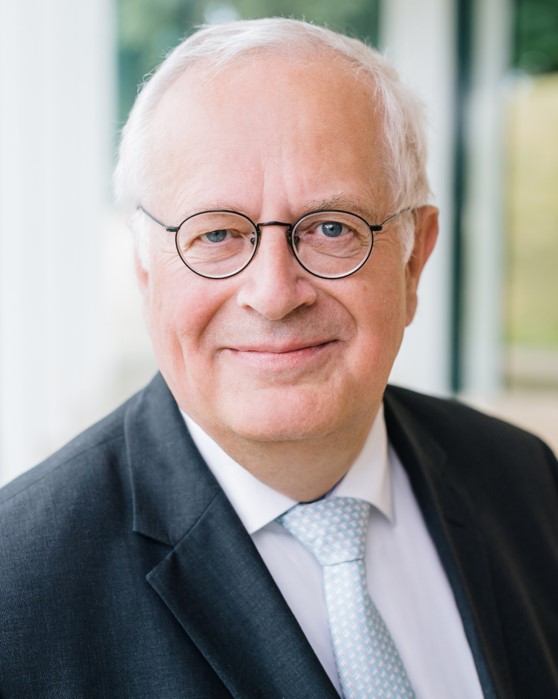
Prof. Dr. Ulrich Stephani
Medical doctor and professor at the University Clinic of Kiel, Neuropaediatrics; former Dean of the Medical Faculty, Kiel University, Germany.
Ulrich Stephani, born 1954, completed his study of medicine at the Universities of Hanover, Würzburg and Berlin. He received his license to practice medicine in 1977, was certified as a pediatrician in 1989 followed by “Habilitation” and Venia Legendi in 1990.
From 1992 to 2018 he held the function as Director of the Dept. of Neuropaediatrics at Kiel University, as well as Director of the Northern German Epilepsy center for children and adolescents. Between 1998 and 2007 Ulrich Stephani was the first secretary of the German chapter of the ILAE, in 1999 and 2000 president of the German speaking Society for Neuropediatrics. In 2013 he was appointed to Dean of the Medical Faculty at Kiel university until 2020, from 2018 he was board member of University clinics of Schleswig Holstein. Retired in 2020 he is active in several functions at Kiel University. He completed several third party funded research projects and published more than 250 articles on Neuropaediatrics and pediatric epileptology.
Consciousness – approach with epileptology
Abstract
In people with epilepsy intermittent loss of consciousness is common and constitutes one part of their seizure, sometimes it is their only visible part as in childhood absence epilepsy. This cerebral dysfunction is mostly accompanied by so called spikes and wave – activity (sw), measurable with encephalographic methods like electro- (EEG) or magneto electrography (MEG). Sw – discharges themselves can be but need not be necessarily accompanied by changes of consciousness. After a clinical video-EEG-example of sw-in a school girl, frequency spectrum and network studies using EEG and EEG-fMRI time series will show differences between sw with and without changes of consciousness. The respective networks seem to be related to structures of the so-called default mode network. In epilepsy, oscillatory synchronization and desynchronization of different brain areas are changed based on astro-glial and neuronal dysfunctions, exemplified in epileptic absences with sw. These insights might also be used to study and explain non-disease changes of consciousness, e.g. certain emotional and dreamy states.
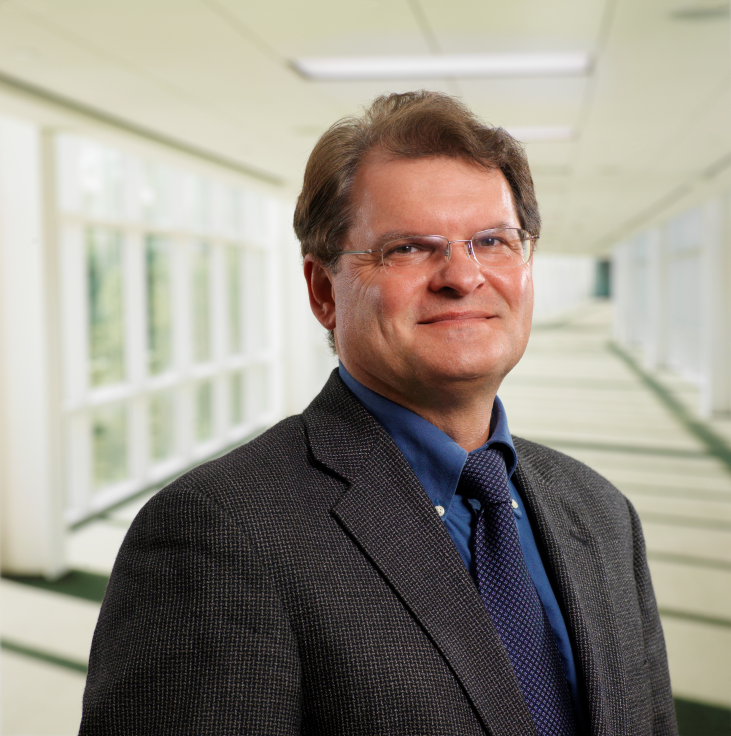
Prof. Dr. Jack Adam Tuszynski
Ph.D., D.Sc., Professor, University of Alberta
Dr. Tuszynski obtained an M.Sc. with distinction in theoretical physics at the University of Poznan in 1980. In 1983 he was awarded a Ph.D. in condensed matter physics at the University of Calgary where he was also a PDF in the Department of Chemistry. In 2015 he received habilitation (D.Sc.) from the Silesian University of Technology, Gliwice, Poland in the area of cybernetics and bioinformatics. He holds 5 US patents, has published over 575 refereed journal papers, 60 conference proceedings, 12 research monographs and 20 book chapters. He has served on the editorial boards of 30 scientific journals and has been an Associate Editor for the Frontiers Collection of the Springer Verlag, Heidelberg. Dr. Tuszynski gave 200 invited talks at conferences and workshops on all six continents. His employment experience includes being an assistant professor at Memorial University of Newfoundland and then being appointed assistant, associate and full professor in the Department of Physics at the University of Alberta in 1988, 1990 and 1993, respectively. Dr. Tuszynski has also held visiting professor appointments at the University of Bielefeld, Germany, Nankai University, Tianjin, China, Ecole Normale Superieure, Lyon, France, Catholic University of Leuven, Belgium, J. Liebig-Universität Gießen, Germany, H.Heine-Universität Düsseldorf, Germany and Danish Technical University, Lyngby, Denmark. He also spent a year as a research manager in a private R&D company in Brussels, Belgium called Starlab NV. Between 2005 and 2020 Dr. Tuszynski has held the prestigious endowed chair in experimental oncology at the University of Alberta, called the Allard Chair. His record of graduate supervision includes over 20 PDFs, 25 PhDs and 20 M.Sc. stduents. He has been actively collaborating with R&D companies in the biotech and pharma area around the world, including Sinoveda (Edmonton, Canada, Telormedix (Lugano, Switzerland), Novocure (Haifa, Israel), Oncovista (San Antonio, TX, USA, CSTS Health Care (Toronto, Canada) and Autem Medical (Sao Paolo, Brazil). He is co-founder of two University of Alberta spin-off companies: ProPhysis and Achlys. Dr. Tuszynski’s research focuses on the use of high-performance computing in drug discovery. He has been using computational modeling in the area of molecular dynamics, docking, virtual screening, bioinformatics and systems biology. As a result, one of the lead drugs discovered computationally, called CCI-001, is now completing its pre-clinical tests for the expected Phase I/II clinical trials for metastatic baldder cancer in 2020. Another drug, an ERCC1-XPF inhibitor is currently undergoing lead optimization for colorectal cancer.
“Uncovering Electrodynamic Design Principles of Living Cells and a Potential Role of Quantum Interactions in Cellular Signal Processing”
Abstract
The structure-function relationship is the basis of quantitative analysis of living organisms whose fundamental unit is a cell. Cellular structural and functional complexity is a challenge to our understanding of responses to various environmental changes affecting cells. Electrical and electromagnetic interactions with cells are particularly poorly understood. I will discuss recent experiments performed in parallel with computational modelling aimed to develop an integrated model of the cell as a bioelectric circuit. I will summarize key bio-electric properties of the cell as a whole and its major components, which will allow to reverse engineer the underlying bio-electrodynamic design principles. While much is known about the electric properties of cell membranes, explorations of the cytoskeleton, are still nebulous. Key cytoskeleton components, actin filaments and microtubules, play essential roles in cell motility, mitosis, cell differentiation, transport and signalling. Their elementary protein building blocks self-assemble into cell-spanning filaments, and are strongly affected by temperature, ionic concentrations, pH and other factors. These factors are involved in cellular structure formation and significantly affect cellular responses to electric and EM fields. My ultimate objective is to uncover an electrodynamic design blueprint for eukaryotic cells accounting for these factors, both generically and in comparison between normal and cancer cells. While cancer cells exhibit major changes in their electro-chemical properties compared to normal cells, this property is yet to be substantially exploited for therapeutic applications, although some promising advances have recently been made and I’ll discuss them in this talk. This work is intended to unveil a new paradigm for health and disease and enable new therapeutic interventions. Finally, in relation to the potential role of the cytoskeleton in quantum mechanisms of consciousness, I’ll report some recent experimental and computational results obtained within the Templeton Foundation supported project I am coordinating.

Prof. Dr. Harald Walach
CHS-Institut Berlin, Germany
Coming Soon
“Beyond a Materialist World View – Why a Materialist Theory of
Consciousness is Deficient and How a New Science of Consciousness Could Contribute to a Broadening of Science”
Abstract
It seems to be a generic consensus among many natural scientists and public promulgators of the “scientific worldview” that a materialist theory of consciousness is the only viable model. In such a view our consciousness is generated by the brain and dependent on its activities. When the brain dies, individual consciousness dies as well. This view has become a quasi-religion in various influential quarters in the West. It is deficient in my view, and in this talk I will present some data and arguments against it. I have elaborated on these in more detail in my report for the Galileo Commission of the Scientific and Medical Network (https://galileocommission.org/report/). This worldview makes presuppositions that it cannot prove, but has to assume to be true, such as the primacy of matter over consciousness, or the reliance on sense experience as a methodological stance. It also neglects important data, for instance about the possibility of non-local perception and communication, as has been documented by parapsychological research. Also, data on non-local perception during near-death experiences and data on reincarnation memories and birthmarks of children point to the fact that consciousness is an entity in its own right, perhaps co-primary with or even foundational for the matter. If we accept this, then also conscious experience as inner access to fundamental structures of the world might be a possible avenue to scientific insight. Mathematicians and physicists are already using this, when they discover mathematical structures, which are insights into abstract structures of the world. But perhaps this road could also be used for other types of discoveries, such as the discoveries of values and meaning. It might also give rise to a new way of exploring and developing human consciousness.

Prof. Dr. Annette Wilke
Münster University, Institute for Theology, Germany.
Annette Wilke is Professor of the Cultural Study of Religions (emeritus) at the Westfalian Wilhelms University of Muenster, Germany (1998–2019). Academic training in the History of Religions, Philosophy, and Theology at the University of Fribourg (CH), and in Indology in the US, Zurich und Varanasi. PhD in the History of Religions at the University of Berne (1994) with a dissertation on comparative mysticism. A. Wilke is a founding member of the Centre for Religious Studies at the University of Muenster and of the working group Aesthetics of Religion (German Association for the Study of Religion, DVRW). She has been conducting a research project on the Tantric ritual manual Paraśurāmakalpasūtra, funded by the German Research Foundation (DFG), and she belonged to AESToR NET, funded by the DFG. Until her retirement she was also a member of the Cluster of Excellence “Religion and Politics” at the University of Muenster with a project on global Hinduism.
- Wilkes’s research focus: Hindu traditions, cultural hermeneutics, ethno-indology, comparative religion, mysticism, ritual studies, and the aesthetics of religion/ religion and the senses, esp. sensual awareness and consciousness building in Indian traditions, sound and communication in Sanskrit Hinduism past and present, and cultural hierarchies of perception. She has widely published in these fields. Publications include Ein Sein – Ein Erkennen. Meister Eckharts Christologie und Śaṃkaras Lehre vom Ātman: Zur (Un-)Vergleichbarkeit zweier Einheitslehren (1995); with O. Moebus Sound and Communication. An Aesthetic Cultural History of Sanskrit Hinduism (2011) – also addressing sound in Radhasoami faith; with L. Traut (eds.), Imagination – Religion – Ästhetik (2015); ed., Constructions of Mysticism as a Universal. Roots and Interactions Across Borders (2021).
“Consciousness in Advaita Vedanta”
Abstract
My paper explores the conceptual, epistemological and experiential dimensions of consciousness (cit, caitanya, jnana) in the Advaita Vedanta, an Indian tradition which has played a pivotal role in representing Hinduism and mystical peak experience since the late 19th century. The investigation is not merely based on the historical and cultural study of religion, but approaches the Advaita Vedanta as a teaching tradition (rather than a philosophical system) with unique rule-governed text hermeneutics based on verbal testimony (sabda pramana), oral transmission (guruparampara) and the spiritual practice of hearing, reflecting and contemplating (sravana, manana, nididhyasana) leading to an immaterial state of pure, transcendental consciousness, non-dual experience (advaita), limitlessness (ananta) and bliss (ananda). The discussion moves from metaphors of Consciousness in the Upanisads (such as “the mind of the mind” or “supreme light”) and major concepts (such as “self-luminosity” and “knowledge” of the “inner”/“supreme Self”) in the commentaries of Sankara (8th cent. CA) to the analytical grids of classical exegesis and the teachings of modern Advaita Vedanta masters (late Swami Chinmayananda and Swami Dayananda) who convert Sankara’s scholastic, technical language into every-day language understood by everybody.
A pivotal role in mapping Advaita Vedantic consciousness and at once a vital illustration for the intellectual rigour of classical exegesis will play the school’s central formula sad-cid-ananda (Being-Consciousness-Bliss) and its precursor satyam jnanam anantam in the Taittirya Upanisad, which received in-depth commentaries that claim that all three terms must be there to shed light on each other. At the same time it will be seen, that self-luminous consciousness is the connecting link not only between the three terms, but also of the nondual experience of human and absolute reality (atman and brahman), a state of tranquillity and fullness, and the cosmic expansion of ordinary (limited) consciousness into an altered (unlimited) state of perceiving oneself as Self in everything.
A concluding section of the paper will look at an important line of thought and central thesis throughout the history of Advaita Vedanta upto the modern masters and discuss it within the larger framework of mysticism debate and neuroscience. This central thesis is that immediate “unbroken” experience of consciousness pure and simple is something which all human beings share, in fact, the only thing they share. Advaitic consciousness as a universal, transsubjective feature (above culture, caste, and creed) was an important argument of Swami Dayananda and Swami Chinmayananda who also spoke of a “science of perfection” (as scientific as physics etc., but relating to the inner world). Remarkably, pure consciousness events and direct experience of sublime states of nonduality have been at the core of ‘proving’ the universal, cross-cultural spread of mysticism/mystical experience, but were denied to exist by the cultural (contextual and constructivist) study approach. In contrast, some authors of neuroscience and studies of consciousness and meditation lend new support to the universal view. In the framework of the paper the reference to neuroscience can only be short, more of a prospect for further study, but worthwhile to mention as a program to complement the cultural, contextual approach or combine with it, and to uphold what Rosen (2016) called “contemplative universals”.
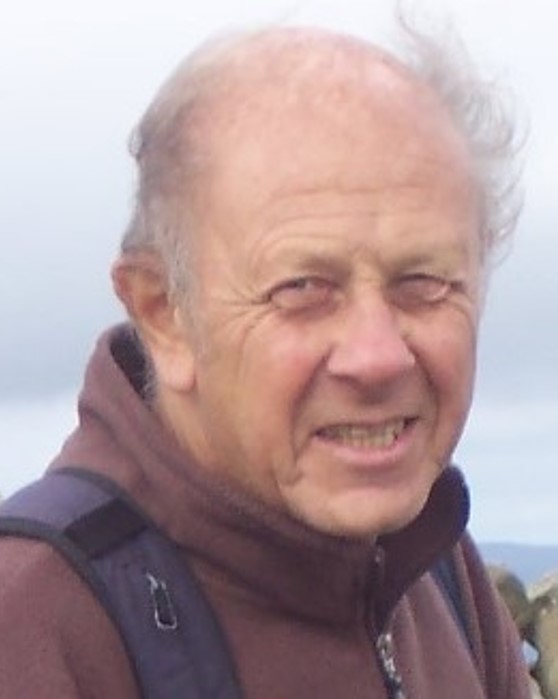
Prof. Dr. Ralph Yarrow
University of East Anglia, (UEA), Norwich, School of Literature, Drama and Creative Writing, UK.
Ralph Yarrow is a teacher, theatre director, performer, actor trainer, writer, editor, translator, project leader.
I made a founding international contribution to research into consciousness and the arts; developed further specializations in improvisation, Indian and Asian theatre, and Applied Theatre, centred on close co-operation with India’s leading Forum Theatre/Theatre of the Oppressed organisation, Jana Sanskriti.
Books include Improvisation in Drama, Theatre and Performance (with Anthony Frost, 3rd edition, 2015); Indian Theatre: Theatre of Origin, Theatre of Freedom; and the co-written Sacred Theatre (with Carl Lavery et al); translations (from German) of Birgit Fritz’s InExactArt: the Autopoietic Theatre of Augusto Boal, and her The Courage to Be: Augusto Boal’s Revolutionary Politics of the Body (2016).
I have directed in the UK, Germany, India and South Africa.
Current research focuses on Theatre of the Oppressed/Applied Theatre practice; theatre and embodiment; Indian and South African practice and contemporary theatre; theatre and ecology.
TBA.